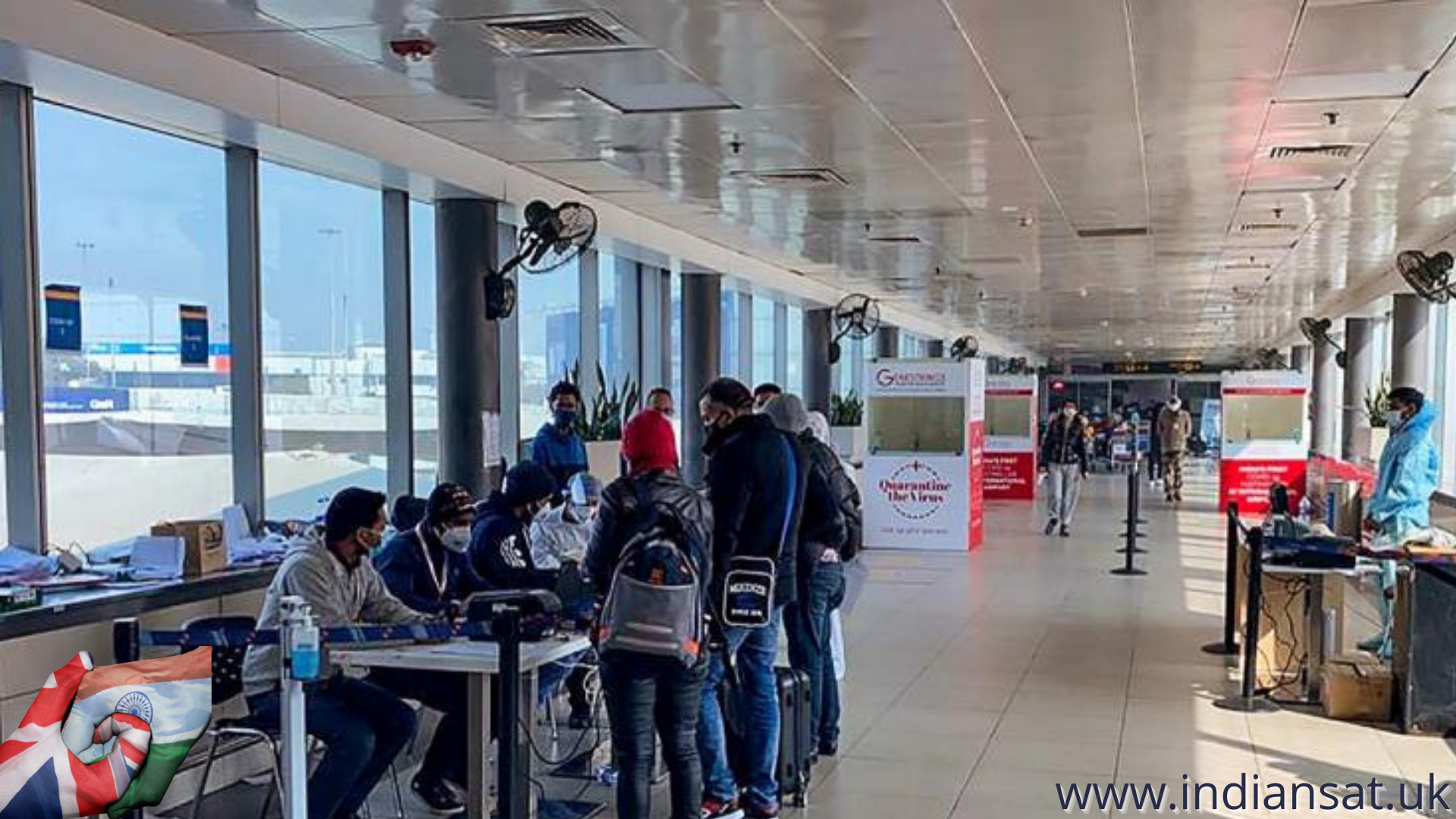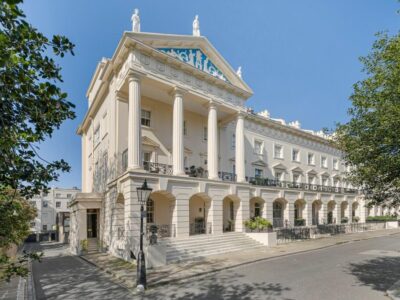India held talks over the UK’s quarantine rules, even as reports suggested that Britain had raised concerns over the vaccination certification.
British High Commissioner Alex Ellis and National Health Authority Chairman RS Sharma on Thursday held discussions on vaccine certification for Indian travellers with the UK envoy describing the deliberations as “excellent” and “important step forward”. In a tweet, Ellis said neither side raised technical concerns with each other’s certification process in the technical discussions.
The talks came a day after the UK amended its new travel guidelines to include the Indian-made version of the AstraZeneca vaccine in its updated list of approved COVID-19 vaccines.
“Excellent technical discussions with @rssharma3 @AyushmanNHA. Neither side raised technical concerns with each other’s certification process. An important step forward in our joint aim to facilitate travel and fully protect the public health of UK and India,” he tweeted following the talks.
In his reply to the envoy’s comments, Sharma echoed Ellis’s views and talked about the deepening of ties between health authorities of the two sides. “Echoing his excellency @AlexWEllis’s views, this will be instrumental in resuming socio-economic activities between India and UK. We also look forward to deepening ties between @AyushmanNHA and @NHSX, as we collaborate to build a digital continuum of healthcare services,” Sharma tweeted.
Following India’s strong criticism over the UK’s refusal to recognise Covishield, London on Wednesday included the vaccine in its updated international travel advisory. However, Indian travellers vaccinated with two doses of Covishield will still have to undergo 10 days of quarantine in the UK notwithstanding the amendment, UK officials clarified on Wednesday saying the inclusion of the vaccine will not make much of a difference.
“We’re clear Covishield is not a problem. The UK is open to travel and we’re already seeing a lot of people going from India to the UK, be it tourists, business people or students,” Ellis said in a statement on Wednesday.
“We have been having detailed technical discussions regarding certification, with the builders of the CoWIN app and the NHS app, about both apps. They’re happening at a rapid pace, to ensure that both countries mutually recognise the vaccine certificates issued by each other,” he had said.
According to new rules, Indian travellers who received both doses of the Covishield vaccine produced by the Serum Institute of India will be considered unvaccinated and will have to undergo self-isolation for 10 days.
The new British rules have triggered massive criticism in India.
External Affairs Minister S Jaishankar also took up the issue of Covishield-vaccinated travellers being required to quarantine in the UK with newly-appointed British Foreign Secretary Elizabeth Truss at a meeting in New York on Tuesday.
Rabindranath Tagore’s visit to Hyderabad: When poetry triumphed over politics
There was a thriving cultural scene in the state where Hyderabadis of all persuasions came together. Their love for poetry and Mushairas led them to admire and celebrate poets and persons across religious and linguistic divides.
The September 17th anniversary of the ‘Police Action’, which led to the integration of the princely state of Hyderabad in 1948, has become increasingly contentious with selective use of history by political parties to further their current polarising agenda. Lost in the din is nuance and context which allows us to see the complex socio-political reality behind the binaries. There were many instances where the contending groups came together and cooperated. Similarly, there were many figures of the nationalist movement who were universally admired in Hyderabad.
This article focuses on one such instance by showing how individuals can rise above the divides and be a force for unity and cooperation. It also demonstrates that the Hyderabadi society of the 1930s and 1940s was in flux when multiple visions of the future were being debated and discussed. It also challenges the simplistic attempts at communal characterisation of historical figures for contemporary gains.
The 1930s were eventful years in the history of Hyderabad with a relative increase, as compared to the rest of the subcontinent, in communal mobilisation and intense debates about the princely state’s future. This marked the early beginnings of polarization of the population on communal and ideological lines.
Fissures in the Muslim community between nationalists and those who wanted to maintain the status quo also began to appear. However, contentious politics was not the only thing on the minds of Hyderabadis. There was a thriving cultural scene in the state where Hyderabadis of all persuasions came together. Their love for poetry and Mushairas led them to admire and celebrate poets and persons across religious and linguistic divides. The arrival of Rabindranath Tagore in Hyderabad city in 1933 clearly demonstrated this admiration.
The poet was not unfamiliar with the Nizam’s dominions. His institutions, Visva Bharati and Santiniketan, received generous donations from the Nizam. The latter had donated Rs1 lakh for the construction of a hostel in Santiniketan in 1933. Therefore, when Mehdi Nawaz Jung, secretary to the Nizam’s Executive Council, invited Tagore to come to Hyderabad the same year, he accepted with alacrity.
The poet, in his flowing beard and robes, became a magnet for the intellectual classes of Hyderabad. He was widely feted at ‘at homes and other events organised by various individuals and cultural organisations. He stayed at Kohistan, the Banjara Hills residence of Mehdi Nawaz Jung. Impressed by its sylvan surroundings, he wrote a poem of the same name.
One memorable event from that visit was an ‘at-home organised at Finance Minister Amin Jung’s residence, which was attended by a large number of the city’s Muslim elites. Both Tagore and Amin Jung sported long beards. Their beards grazed each other as the two embraced sparkling witty comments from the attendees.
The Prime Minister Maharaja Kishen Pershad, ever the consummate poet and an embodiment of the courtly culture of Hyderabad composed the following couplet on the spot:
Mehfil mein hain aaj jama do saheb e resh
Donon Dilshad aur donon dilresh
(Assembled today are two bearded gentlemen
Both of them cheerful, both have wounded hearts)
The Maharaja had used a clever pun as resh indicated both beard and a wound.
Amjad Hyderabadi, the people’s poet of Hyderabad known for his simple poetic style with deep philosophical meanings, was also in attendance and added two verses to complete the quatrain:
In donon ki mukhtasar si ta’reef ye ḥai
Darwīsh parast aik, aik hai darwīsh
(Here is the introduction to these two personages,
One is a devotee of mystics and the other is a mystic)
Nawab Bahadur Yar Jung, the leader of the Majlis Ittehadul Muslimeen, was also invited and delivered a short speech. Recounting the event in a eulogy upon Tagore’s death in 1941, Bahadur Yar Jung said that the poet had wanted to hear a good orator in Urdu and his name was recommended by Sarojini Naidu and others. According to one version, Sarojini Naidu apparently told Tagore, “You haven’t seen Hyderabad yet if you haven’t met Bahadur Yar Jung.”
Bahadur Yar Jung, who was one of the finest Urdu orators of that era and one who never had to prepare his speeches, writes that he had to especially draft and practice his speech for that occasion. The Nobel Laureate appreciated his speech and suggested that with practice he could be a great speaker in any language, including English.
The admiration between the two was mutual. In his eulogy for Tagore in 1941, Bahadur Yar Jung said that Tagore was not any ordinary poet but a true student of nature who unveils its mysteries for the masses.
He compared the Urdu poetry of Muhammad Iqbal with that of Tagore and said both had the same goal even though their emphases were different. The former’s poetry was that of action: Iqbal awakened the sleeping masses, urged the awakened to stand up, motivated the standing to walk, and pushed the walking to run.
In contrast, Tagore’s poetry was that of love and peace. Ineloquent Hindustani, Bahadur Yar Jung said:
(Tagore) nai aman aur shanti ka raag alaapa, kapaṭ ki chita mein jalnai walon ko prem jal ke chinṭe diye. Aur dunīa ko dekhnai aur sunnai walon ke liyai aik mujassam naġhma bana gaya.
(Tagore sang the melody of peace, sprinkled the water of love on those burning in the fire of deceit, and left an embodied song for those who wanted to hear and see the world.)
He opined that Tagore’s poetry resonated in the West more than that of Iqbal’s as it was tired of the wars and rivalries and was ‘hungry for a message of peace.
Turning to Indian politics, Bahadur Yar Jung wished that people like Tagore should have led the country: Communal organisations would not have emerged in the country if only Hindustan’s political reins were in the hands of sincere and principled patriots like Tagore. Alas, if only the leaders of the big communities walk in the footsteps of Tagore and allay the fears of the smaller communities.
Bahadur Yar Jung mentioned his two-day visit to Santiniketan where he saw first-hand Tagore’s vision in action. He admiringly talked about the classes under the trees, the library, the frescoes displaying the glory of Indian civilization and the sculptures. This is notable given that Bahadur Yar Jung had at one time expressed his disapproval of sculpture to the Director of the Hyderabad Fine Arts Academy in a letter, stating that such arts are not in consonance with Hyderabadi culture, where even the sculptures of kings are not made.
The Tagore memorial where Bahadur Yar Jung delivered his eulogy was presided over by Sarojini Naidu. The transcript of his speech was published as ‘Ah! Gurudev’ (Sigh! Gurudev) in all the Urdu newspapers of Hyderabad the next day.
The public commemoration of Tagore’s death evoked the memory of three years earlier when Maharaja Kishen Pershad had led Hyderabadis in mourning the passing of that other poet, Muhammad Iqbal.
A thorough reading of lives and letters will also reveal the multi-dimensional personalities of the leaders of that era. For instance, Bahadur Yar Jung appears as the ‘son’ of Sarojini Naidu, ‘friend’ of Mahatma Gandhi and an admirer of Rabindranath Tagore.
Mohammed Ayub Khan is an independent researcher of the history and politics of Hyderabad. Views expressed are the author’s own.
The Khidki Collective is a group of scholars committing to reimagining and building perspectives on regional identities with a view to challenging established narratives around history, nationhood and belonging. Regions have existed even before India came into being and continue to exist. By not neatly fitting into dominant notions such as Hindi-Hindu-Hindustan, regions expand our imaginations. The collective takes its name from Khidki – window, the early medieval name of Aurangabad city, as well as the name of a famous octagonal mosque in Delhi built by an administrator who identified himself as a Telangana. The collective is anchored at the Hyderabad Urban Lab. This piece is part of TNM’s Deccan Series brought to you in collaboration with the Khidki Collective, a collection of eight essays that will look at what it means to belong to the Deccan, which does not exist as a state or administrative entity, but still defines people and communities, how they live, what their politics is.
![]()






